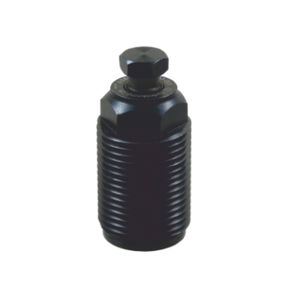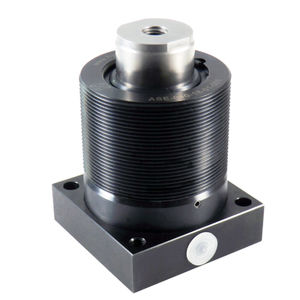
Spring ball plunger 280-70
Add to favorites
Compare this product
Characteristics
- Options
- spring
Description
If vibration and deflection must be avoided while machining workpieces in low pressure range, these work supports (ASE) are the ideal solution. The threaded body elements can be screwed into customer-specific threaded installation bores to save space. The sealing is done with two supplied sealing rings against the bottom of the installation bore. The Work supports can be arranged horizontally and vertically in the clamping fixture. Plunger fixing can be combined with the hydraulic clamping of the workpiece or separately. Two functional methods are choosable for advancing the plunger.
1. Plunger advances by spring load:
Basic position of the plunger is extracted.
The integrated spring advances the support plunger against the workpiece. After pressurization, the support plunger is fixed in position. Except from the spring load, no further forces act on the workpiece.
2. Plunger advances hydraulically:
Basic position of the plunger is retracted.
The support plunger is held in the retracted position by a reset spring. When the pressurization initiates, the support plunger advances via spring force against the workpiece and be finally fixed in this position.
Special features:
compact fixture designs possible
horizontal and vertical mounting possible
plunger fixing combined with clamping or separate possible
with protecting soft wiper
pressure oil supply via drilled channels
standard work supports and special designs available
Operating pressure: pmax. 70 bar
Advance method: hydraulically or via spring force
Plunger: Ø (stroke) 10 (6,5) | 12 (8) | 15 (8) or 16 (10) mm
Support force: min. 3, max. 10 kN at 70 bar
Catalogs
No catalogs are available for this product.
See all of HYDROKOMP‘s catalogs*Prices are pre-tax. They exclude delivery charges and customs duties and do not include additional charges for installation or activation options. Prices are indicative only and may vary by country, with changes to the cost of raw materials and exchange rates.




